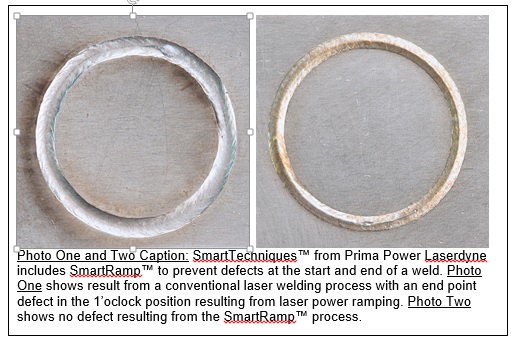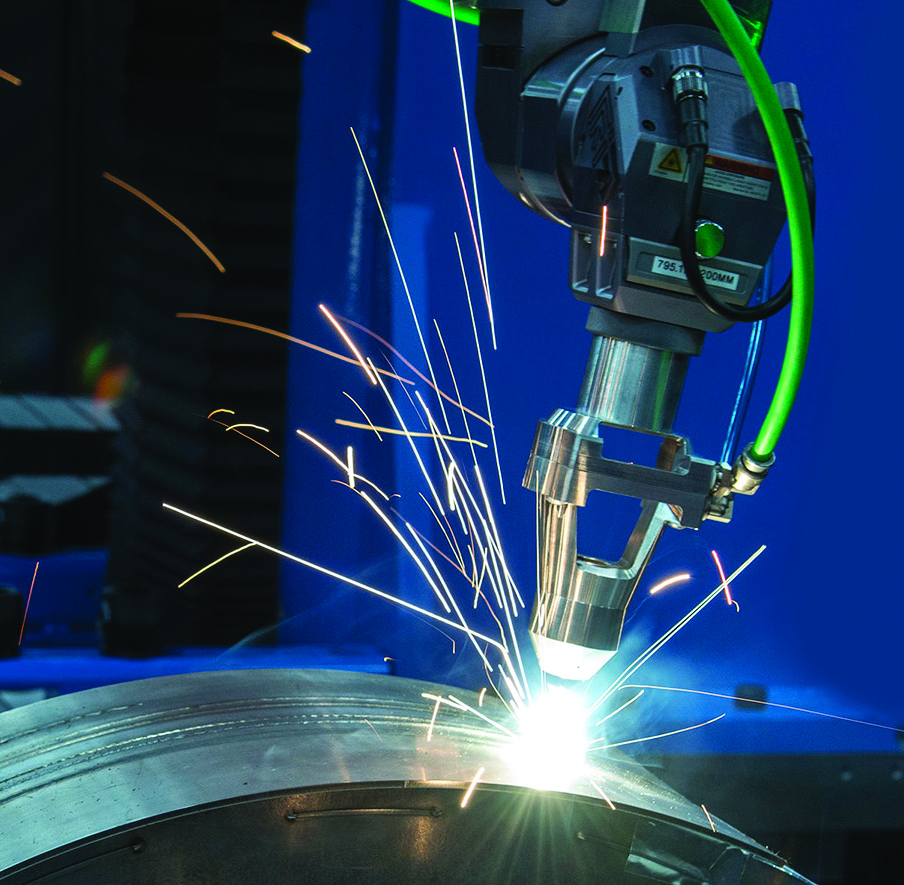
This new technology increases the productivity, quality and capability in laser welding as well as in laser cutting and drilling.
Both the CW (continuous wave) and QCW (quasi-continuous wave) sources provide a combination of wavelength, beam quality, and power to make existing processes better and/or faster. Another feature of these solid-state laser sources is the speed and precision with which laser parameters can be controlled.
To capitalize on these developments, Prima Power Laserdyne has applied its applications and design engineering resources to develop new capability for controlling the fiber laser welding process and for increasing the quality of laser welds.
While these new capabilities can be applied to laser systems having a wide range of high power industrial lasers, SmartTechniques’ value becomes greatest when applied to high power fiber laser based systems.
SmartRamp™ Provides Precise Control Of The Laser Process
To Prevent Defects At The Start And End Of A Weld
With standard laser welding practice, the laser power is ramped down at the end of the weld after the start point has been over lapped. This method leaves an undesirable depression at the end points.
For most applications, this depression is undesirable but has been considered “just the way it is” for laser welding. This commonly accepted condition can have serious consequences. For example:
• In hermetic welding, the depression at the end point can be a leak point (Photo One)
• For applications requiring high fatigue strength, the depression represents a stress-riser for possible premature weld failure.
• For cosmetic welds, the appearance of a visual depression often causes quality concerns requiring additional secondary finishing and quality control procedures.
Using SmartRamp, the laser parameters are controlled in conjunction with the motion to prevent the depression at the end of the weld, as shown in (Photo Two)
A good weld is crack and porosity free and has high strength and reliability. There are a number of process parameters that affect the quality, size and properties of laser welds. Quality welds produced with SmartRamp are characterized by reduced porosity at the end of the weld and, more importantly, with consistent crown and less undercut of the top bead.
SmartShield™ Protects The Lens Coverslide
Using Clean Compressed Air While Supplying Shield GasTo Protect The Weld From Oxidation
A second SmartTechnique from Prima Power Laserdyne is the patent pending SmartShield™ nozzle assembly. This hardware/software combination provides simultaneous shielding of the laser weld and protection of laser systems optics without mixing shield and protection gases. (Photo Three)
SmartShield provides a high velocity compressed air (for lowest operating cost) barrier that prevents metal sparks from the weld zone from contaminating the protective lens cover slide.
In addition, SmartShield provides a controlled atmosphere for the weld zone while it is molten and while it is cooling to a temperature at which it will no longer be affected by the ambient atmosphere. SmartShield is available with a range of shield gas delivery devices including welding shoe, side jets and coaxial gas nozzle tips (Photo Three) that best fit the material and weld joint design.
A major difference between SmartShield and other air-knife designs is that the gas from the cross-jet does not contaminate or otherwise interfere with the welding shield gas. SmartShield also makes use of a different, lower cost gas (regular, compressed shop air) for protecting the lens coverslide than the typically more expensive shield gas used to protect the weld from oxidation.
An important benefit of the design of the focusing lens/shield gas assemblies for laser welding is that they can be quickly changed to vary the focused spot size or to change from welding to cutting or drilling.

SmartShield™ patented nozzle assembly protects the lens coverslide using clean compressed air while supplying shield gas, such as nitrogen or argon, to protect the weld from oxidation.














